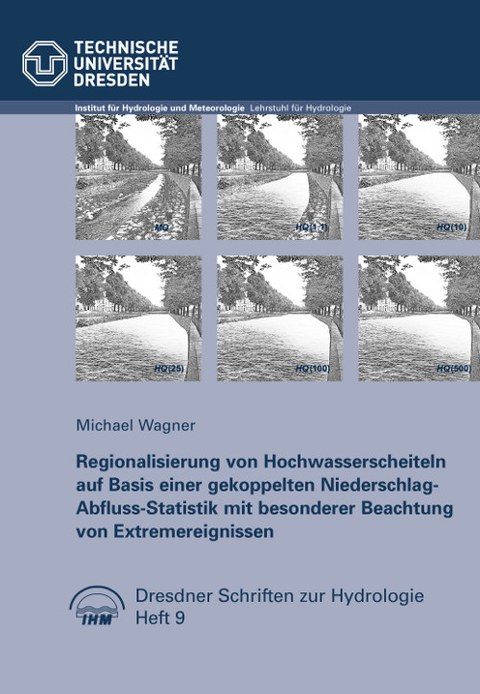Booklet 9
Regionalisierung von Hochwasserscheiteln auf Basis einer gekoppelten Niederschlag-Abfluss-Statistik mit besonderer Beachtung von Extremereignissen
by Michael Wagner (2012)
Abstract: The dimensioning of different constructions at and in streams respectively requires knowlegde on the flood situation at site. For instance flood protection concepts often base on a peak discharge of the annual recurrence probability of 1/100. A more severe flood of an annual recurrence probability of 1/10000 is used to confirm the stability of large dams following DIN 19700-12 (2004). Such a flood cannot be deduced from runoff data only, but rather shown in an idealised way. It results not least on the fact, that human can witness a very improbable flood event. But is it not possible to verify the improbability. Every modelling scheme that is confronted with the deduction of such an extreme flood event will be of limited reliability. The task's aim will therefore be to make the estimation more reliable. Generally the more data a model involves the more trustworthy the results will become. Directly coupled with runoff are historical flood data and qualitative details of small scale flood events respectively. Aside runoff information an important data source is precipitation data, which is coupled with runoff data in a causal way, and the possible maximum precipitation. If additionally whole regions are examined it is possible to consider regional facets and structures of larger catchments. These strengthen and expand local modelling basics and provide a regional consistent result. Vice versa the flood regime can be regionalised to gain information at unobserved cross sections. Out of the described expanded modelling basics follow three links: (i) It is necessary to find a flexible but still plausible formulation of the statistical precipitation regime until the probable maximum precipitation. (ii) The formulation of point i) has to be coupled with the flood regime to include these information. (iii) The adjacent regionalisation has to account for the nested and arboreal structure of hydrological catchments. Point (i) will be solved by a split distribution function. That allows the ideal display of the more probable domain as well as the characteristics until the probable maximum. Regarding point (ii) a new principle of coupling will be developed. It bases on the assumption that a regional maximum runoff coefficient exists and it will be gained asymptotically. As a result of the runoff coefficient approximation the runoff distribution function gets an upper limit depending on maximum precipitation and runoff coefficient. Respecting the guidelines in point (iii) the reference gauge method will be developed. It bases upon the fact, that likewise catchments generate equivalent peak discharges. For this reason it is possible to carry known peak discharges of a reference gauge onto unobserved subcatchments. Among other things the choice of a reference gauge accounts for the topology of the catchments. The whole strategy can be applied to large catchments what is exemplarily shown in Saxon streams. Beginning with a data homogenisation to the point of discharges of extreme low exceedance probabilities at unobserved cross sections the whole procedure is shown.

